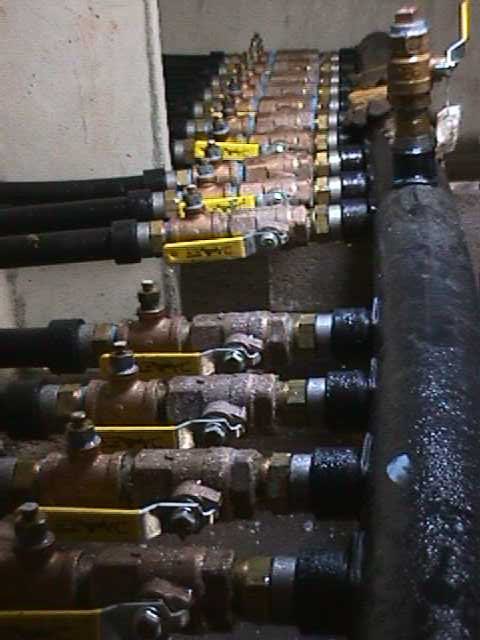 |
|
|
|
Case Study Cable TV Building in HazletonThis is just some of the header work that needs to be done. Notice the joints. They are 'fused' together. By using this process, the pipe is actually melted back together to form one continuous piece of pipe. The difference from traditional insert type fittings is that these can never start leaking at a joint. Since there are no joints in the pipe(it has been melted back together to form a jointless connection). Fittings cannot degrade, clamps cannot loosen from the constant expanding and contracting of the pipes(it will go from warm to cool fluid depending on if the building is in heating or air conditioning) Once installed properly, the loop should never have to be serviced. Notice also, the hand-backfilling of the first 1 foot or so of the backfill process, this guarantees that we won't have any rocks or other debris touching the pipes to rub and cause a leak in the future.
Part of the grouting process.
there are 3 pipes in this picture, two are the loop pipes and the third one is the 'tremmi pipe' it is used to pressure grout the well from the bottom up. If we were to just dump the grout down the hole from the top, it would bridge part of the way down and the hole would be filled with many air pockets. The heat doesn't travel through air, so the efficiency of the loops would be lost.
The picture below is grout that has been introducted into the hole at 400 feet down and pushed all the way up to the top. We can guarantee that there are no air pockets this way.
Hazelton's mascot 'kelsie'
This is just a picture of the main header area.
A picture of the cement tank that holds all the connections. In the back of the tank you can see the 4" geothermal pipes going into the building.
Below is a picture of the header pipes that were installed in the cement tank. Each loop has a shutoff mainly for flushing, purgin, and balancing reasons.
|

















